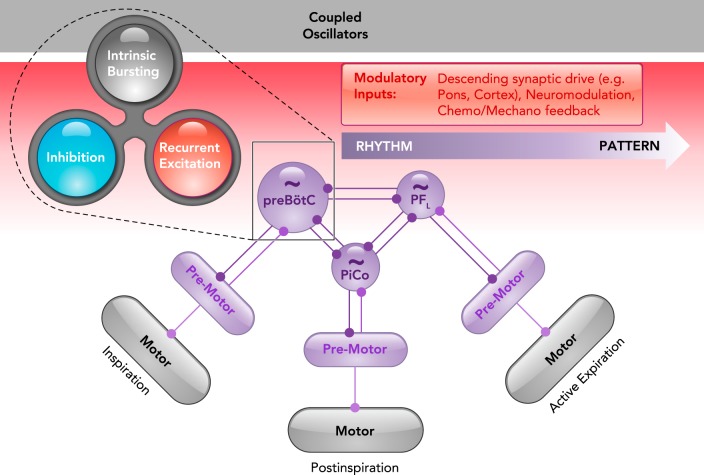FIGURE 6.
A contemporary view on the origins of mammalian breathing
The triple oscillator hypothesis (6) proposes that each breathing phase is generated by a distinct microcircuit in the medulla: the preBötzinger complex (preBötC) generates inspiration, the postinspiratory complex (PiCo) generates postinspiration, and the lateral parafacial region (pFL) generates active expiration. Each oscillator is coupled by excitatory and inhibitory connections, although inhibition typically dominates to coordinate the timing of each breathing phase. As shown in the preBötC, rhythmicity within each microcircuit is controlled by a balance between recurrent synaptic excitation, inhibition, and intrinsic bursting properties, i.e., the rhythmogenic triangle (103). A gradient of rhythm (purple) and pattern (gray) generating properties can be independent or interdependent depending on the connectivity between specific rhythm, premotor, and motor elements. The activity of rhythm- and pattern-generating elements can be differentially tuned by various modulatory inputs (red) to endow breathing with exquisite metabolic-, state-, and behavior-dependent control.

